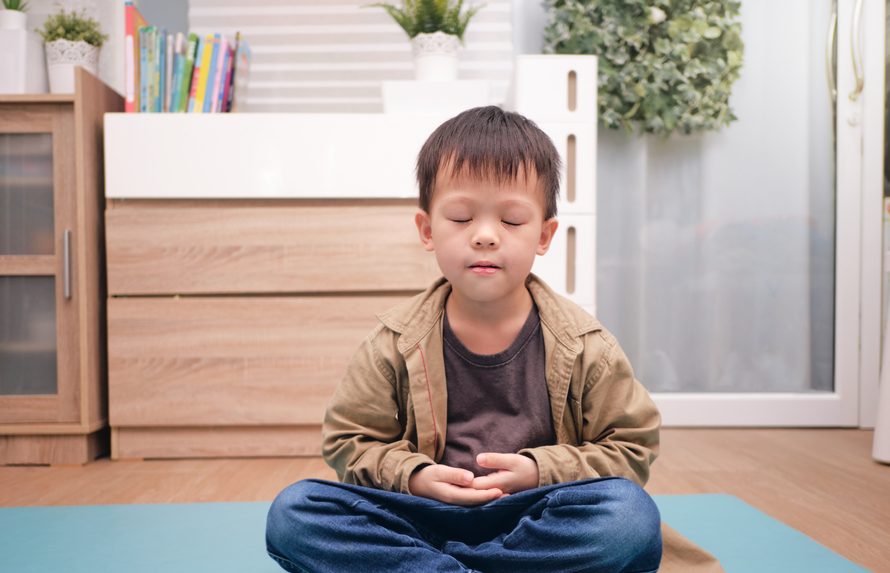Students at Tampa Bay, Florida’s Patricia J. Sullivan Partnership Elementary School participate in a unique morning ritual that sets the tone for the rest of the day. Principal Dave McMeen highlights the value of self-control over a breakfast of apple strudel, fruit juice, banana, and milk, making use of the cafeteria to impart key lessons. The school, in conjunction with the local non-profit Metropolitan Ministries, aids children suffering external stressors by providing a haven for 76 Tampa Bay pupils who are at risk of becoming homeless.
“Students experience these traumas of which sometimes they don’t have control over,” notes Principal McMeen. “While we have them, what do we have control over? It’s those few moments to say, Ok, take that hurt, take that pain, let’s figure out how we can release it,” he adds, underscoring the school’s commitment to addressing students’ emotional well-being.
Mindfulness revolution: Inner Explorer’s impact
To address students’ stress, Sullivan Elementary implemented a mindfulness curriculum called Inner Explorer. This daily app-based project teaches students to observe sensations and emotions, promoting a mindful attitude to their daily lives.
Inner Explorer teaches students simple yet effective tactics such as the “shark fin.” Avery, a fifth-grader, explains that this technique involves holding the palm vertically, placing the thumb on the forehead, and bringing it down to the heart. It is an effective strategy for regaining self-control during stressful situations.
“The ‘shark fin‘ is a strategy that you can use to cope, or you can journal and let out your feelings in a good way,” Avery explains, shedding light on the practical application of mindfulness strategies.
“Mindfulness is one of the few tools we have to enhance mental well-being in students,” says John Gabrieli, a cognitive neuroscientist at MIT. According to research, mindfulness can reduce chronic stress while also benefiting cognitive skills necessary for learning and memory.
Mornings of stillness: breathing in wisdom
Every morning at 8:50 a.m., a prepared mindfulness session plays over the school’s loudspeaker, beginning a collective practice of silence.
Mandy Hambrick, a second- and third-grade teacher, agrees that mindfulness benefits her students. In her class, seventeen students actively participate in daily mindfulness exercises, which cover topics such as forgiveness and stress reduction.
“It can help you relieve the stress so you’re not angry, and you don’t take it out on somebody else,” shares Grace, a student, highlighting the practical impact of mindfulness.
Academic achievement: mindfulness as a catalyst
Sullivan Elementary underwent a tremendous transformation in 2022, earning its first “A” grade based on standardized test performance. Principal McMeen attributes this shift to the integration of mindfulness into everyday practice. Laura Bakosh, co-founder of Inner Explorer, echoes the strong association between mindfulness and academic success, citing significant improvements in student behavior and performance in schools that have implemented the curriculum.
Inner Explorer: a unique model for mindfulness education
The Inner Explorer curriculum, which is used in about 3,000 schools nationwide, provides an accessible approach to mindfulness education. Unlike previous approaches that need rigorous training, Inner Explorer streamlines the process by including ten-minute lessons into the school day. This strategy allows administrators and teachers to smoothly integrate mindfulness into their curricula.
“We have a lot of schools that have been doing it for a couple of years now, and are seeing substantial improvements in student behavior and student performance,” says Bakosh.
Mindfulness beyond the classroom
Digital, app-based mindfulness programs have grown in popularity, offering a cost-effective and convenient option. David Creswell, a neuroscientist at Carnegie Mellon University, recognizes the programs’ potential for making mindfulness training more accessible, particularly to vulnerable people.
Patti Ferlita, a seasoned fifth-grade teacher at Sullivan Elementary, highlights the long-term benefits of mindfulness for her children. Beyond academic accomplishment, mindfulness interventions have sparked a change in students’ social dynamics. “A lot of them really started getting out of the ‘me, me, me.’ They pay more attention to each other and to each other’s feelings,” says Ferlita, applauding the positive reinforcement that has become a hallmark of her classroom.
Teacher and principal insights
Sullivan Elementary teachers observe everyday shifts as children move from the cafeteria’s morning commotion to a state of calm and focus in the classroom. Principal McMeen, Mandy Hambrick, and Patti Ferlita all emphasize the importance of mindfulness in fostering a healthy and supportive school culture during these transitional periods.
“We have a moment to center ourselves – and then we get engaged,” reiterates Principal McMeen, highlighting the pivotal role of mindfulness in creating a conducive learning environment.












